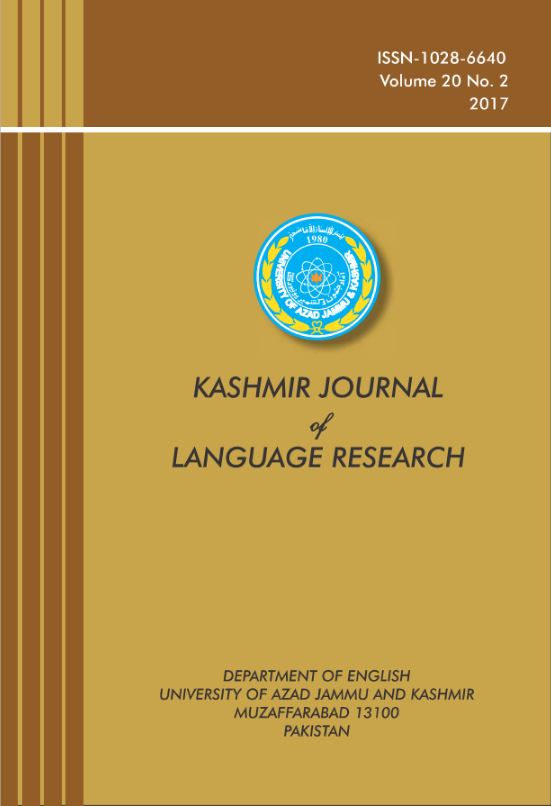Optimality Theory Analysis of Syllable Structures of Pakistani English
Keywords:
Pakistani English, syllable structures, syllabification, optimality theory, Maximum Onset PrincipleAbstract
English, as a non-native variety, in Pakistan has acquired its own form most pronounced on the phonological level. The few attempts have been made to study its structures and treated phonology as marginalized part of lexical or syntactic descriptions. And even when phonological descriptions are carried out, the focus was segmental features only. Consequently, the present study aims to explore supra-segmental features exclusively; which make significant differences in pronunciation and cause problem of unintelligibility. Among many sub-varieties of Pakistani English PE, syllable structures and syllabification of variety of English news media of PE are described. Finally, for the sake of precision and accuracy, optimality theory (OT), proposed by Prince & Smolensky (1993), is selected as a model to analyze syllable structures of PE. For this purpose, the constraints on these phonological features were ranked to make a grammar by forming violation Tableaus to understand interaction of these constraints. The violation computing method VCM (Nadeem, 2016) is applied by ranking constraints of syllable structures in PE. It is concluded that PE forms different syllable structures and syllabification patterns. For example, syllabic consonant C` is not found in PE. Furthermore, Maximum Onset Principle MOP is not applicable word internally in PE. Syllable constraints hierarchy of PE is:
Peak, Faith V, Faith C, Son-seq (undominated) »
CCCs » sCCC » Onset » No-coda » SLH
Results show that PE does not allow cluster of three consonants word internally, so to capture this process CCCs , sCCC constraints are added in the grammar of PE; because ‘*Complex’ constraint prohibits occurrence of cluster of only two consonants.

Downloads
Published
Issue
Section
License
Copyright (c) 2022 Kashmir Journal of Language Research

This work is licensed under a Creative Commons Attribution 4.0 International License.




